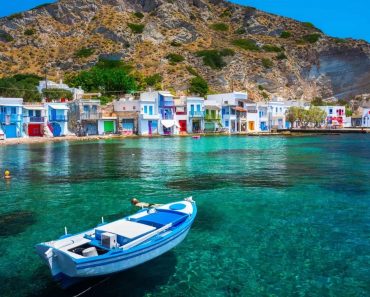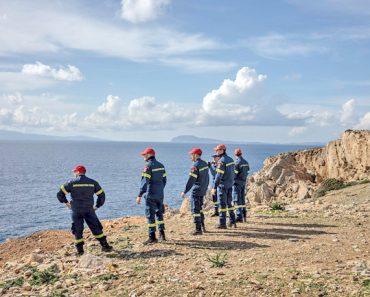It is prohibited by intellectual property law to use or appropriate this content in any unlawful manner, with severe civil and criminal penalties for the violator.
The School Desk Factory on Piraeus Street Becomes a New Cultural Hub
In the mid-1950s, a new factory was established on Piraeus Street, which had become, over the previous two decades, the industrial heart of the capital. At number 260 on the central road that connects Piraeus to Athens, the Greek Metal Furniture Industry (EBME) Tsarousoglou was housed. The company would become a leader in the sector for many years until its facilities were abandoned in the 1990s.

Today, seventy years later, the historical complex, whose buildings have been declared monuments for their role in the architectural and industrial landscape of Piraeus Street in the early 20th century, is preparing to write a new, entirely different page in its history. Through its full restoration and repurposing, it will become a modern cultural hub in Athens, blending historical memory with innovation and creativity.
While the name Tsarousoglou may be unfamiliar to many, its products were central to daily life in Greece for decades. The company produced and supplied the entire country with the beloved school furniture: desks, chairs, teachers’ desks, and metal-base bookshelves. These were the signature products of the company, founded in 1925 in Thessaloniki by Ioannis Tsarousoglou to meet the needs of the local market.
A few years later, however, the growing demand led Tsarousoglou’s sons—Haralambos, Lazaros, and Eleftherios—to expand the company’s activities to Athens under the name Greek Metal Furniture Industry (EBME) Tsarousoglou. The company quickly became a national supplier of furniture, not only for schools but also for airports, hospitals, hotels, theaters, cinemas, offices, and stadiums. It had, among other things, built the stands for the Olympic Stadium in Athens, the Peace and Friendship Stadium, and the Pale de Sport in Thessaloniki.
Meanwhile, the company expanded into wooden furniture, primarily for large hotel complexes. In the 1970s, it became more involved in the construction of hotels and complementary facilities, particularly on Corfu.
At its peak, EBME Tsarousoglou employed around 2,000 workers, who worked tirelessly to meet the deadlines of countless orders coming from both Greece and abroad. During this period, there were reports of inadequate working conditions, including recurring industrial accidents.
This situation persisted until the 1990s, when the influx of imported furniture began to impact the domestic industry, which was unable to adapt to the new market conditions. As a result, EBME’s factory on Piraeus Street ceased operations. Its facilities were acquired by the National Bank of Greece, to which they were mortgaged, and the company’s founders went on to create a new business, which continues to operate today.
Cultural Renaissance
For more than a decade, until the start of the new millennium, Piraeus Street bore little resemblance to its former industrial glory. Most of the factories in the area had closed, and the overall atmosphere of neglect stood as a memory of a bygone industrial era, while also calling for the creation of a new one.
The first step in the regeneration of Piraeus Street was the declaration by the Ministry of Culture of a series of industrial buildings in the area as modern monuments, aimed at their preservation, restoration, and repurposing for cultural uses. This began with the creation of Technopolis in the old gasworks facilities, and the area would soon see new cultural beacons, such as the Athens School of Fine Arts, the Hellenic Cosmos of the Hellenic Foundation of Greek Culture, the Michalis Kakogiannis Foundation, and the impressive new building of the Benaki Museum.
This gradual development created a new cultural axis in the city, parallel to Syngrou Avenue, which saw the construction of the National Museum of Contemporary Art, the Stavros Niarchos Foundation Cultural Center, and the Onassis Foundation’s Stegi of Arts and Letters.
The first discussions between the Ministry of Culture and the National Bank regarding the acquisition of the former Tsarousoglou factory began in 1999. It took 24 years, overcoming numerous bureaucratic obstacles, before the 30-acre complex with 10 buildings was finally acquired by the State in December 2023 for 12.6 million euros, funded by the Development Fund.
However, significant steps had already been taken toward its cultural transformation. In 2006, the National Bank allowed part of the complex to be used by the Athens Festival, which was experiencing an increasing number of artistic activities that could no longer be fully accommodated at the Odeon of Herodes Atticus. Over the following years, Piraeus 260 became one of the main venues for the festival in the capital, hosting innovative theater and dance performances, exhibitions, and other events.
The New Cultural Space
A quick look at the restoration and repurposing plans for Piraeus 260, designed by the architectural firm Kokkino-Kourkoulas Architects, with a donation of 1 million euros from Piraeus Bank, reveals the degree to which this project will change the appearance of Piraeus Street and the cultural landscape of Athens, while maintaining important pieces of its historical and architectural past.
The space will preserve its industrial style, keeping the existing building shells intact while fully restoring them and adapting them to their new uses. Particular attention will be given to landscaping, creating autonomous green areas, using sustainable materials, and achieving energy independence through the utilization of solar and geothermal energy.
In terms of numbers, the new structure will cover 24,500 square meters, a reduction from the current 27,000 square meters. The area of open space, which currently stands at 8,890 square meters, will increase to 13,360 square meters, ensuring more green spaces and better movement for visitors and vehicles.
Regarding its new functions, the restored industrial complex will serve as a modern cultural multipurpose venue, hosting events, exhibitions, actions, administrative services, and public gathering areas.
The Athens Festival will continue to use 7,430 square meters of the complex, where its administration will also be housed. The existing stages will be modernized to improve their functionality.
Meanwhile, a building of 8,600 square meters has already been allocated to the Organization for the Management and Development of Cultural Resources (ODAP) to house the production laboratories for precise replicas, as well as the historical sculpture and model collection, which will become a Museum of Casts, with a budget of 10 million euros secured from the Recovery Fund and ODAP’s own resources. ODAP will also develop a café, restaurant, and shop.
Another building, with an area of 3,100 square meters, will house the valuable collections of the Theatre Museum, acquired in 2021 by the Ministry of Culture. These include elaborate costumes, stage and costume models, personal items of major theatrical figures, rare manuscripts, posters, and programs of historic performances.
The library and archive of the Theatre Museum will be housed in another building in central Athens, specifically in the Soutsou residence at 47 Stadiou Street.
Other Museums
Another museum of particular historical and folk interest will be part of the new cultural center at Piraeus 260. This is the Museum of the History of Greek Costume, created in 1988 by the Lyceum of Greek Women. The museum, currently located at 7 Dimokritou Street, contains over 25,000 items, including authentic traditional costumes and jewelry.
The current space was not sufficient, so the Ministry of Culture responded positively to the request for a new building. Additionally, the historic Museum of Greek Folk Musical Instruments of Phoebus Anogiannakis, operating since 1978, will also have a second location at Piraeus 260. The museum currently resides in the beautiful Lassandra Mansion in Plaka, across from the Square of the Winds, and houses a rich collection of 1,200 Greek folk musical instruments dating from the 18th century to the present day. The original location will remain open, while its collections and events will move to the new space on Piraeus Street.
Ask me anything
Explore related questions






